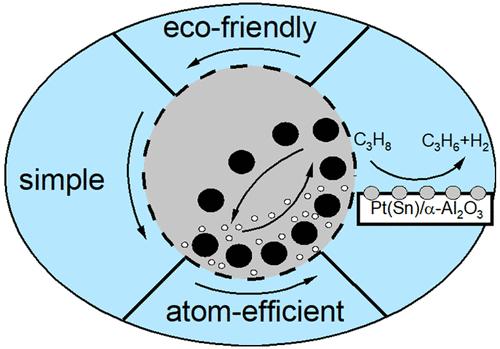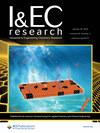用于丙烷脱氢的氧化铝支撑铂催化剂的简便方法
IF 3.8
3区 工程技术
Q2 ENGINEERING, CHEMICAL
引用次数: 0
摘要
丙烷催化脱氢是生产丙烯的一种经济有效的工艺,因为它对烯烃有很高的选择性,同时还能产生氢气。催化剂通常是通过将溶液中的活性成分沉积到载体上获得的。在这里,我们展示了在球磨机中一步直接合成氧化铝支撑的铂催化剂的方法,这种方法可以轻松获得高效催化剂,其性能可与通过更复杂的合成技术获得的材料相媲美。通过使用 XRD、N2 吸附、化学分析、傅里叶变换红外光谱和电子显微镜进行分析,以及在丙烷脱氢为丙烯的过程中对催化剂进行功能表征,证明了这一点。虽然球磨过程没有得到优化,但催化剂的铂粒径分布较窄,约为 2 纳米,并且在相对较低的反应温度下也很活跃,在 500 °C 的稳定状态下可产生约 300 克丙烯 gPt-1 h-1。即使在高达 550 °C 的温度下,选择性仍然非常高。在苛刻的反应条件下也未发现铂烧结现象。由于不需要溶剂,也不需要热处理或还原预处理,这种可扩展的方法既节约能源,又避免了浪费。本文章由计算机程序翻译,如有差异,请以英文原文为准。

A Facile Approach to Alumina-Supported Pt Catalysts for the Dehydrogenation of Propane
The catalytic dehydrogenation of propane is an economically interesting process for the production of propylene due to its high selectivity to the olefin and the coupled generation of hydrogen. The catalysts are usually obtained by depositing the active components from solutions onto a support. Here we show that the direct synthesis of alumina-supported platinum catalysts in a ball mill in a single step provides easy access to efficient catalysts that are comparable in performance to materials obtained by more complex synthesis techniques. This was demonstrated by analysis using XRD, N2 adsorption, chemical analysis, FTIR spectroscopy, and electron microscopy and by functional characterization of the catalysts in the dehydrogenation of propane to propylene. Although the ball milling procedure was not optimized, the catalysts exhibit a narrow Pt particle size distribution around 2 nm and are active at comparatively low reaction temperatures, producing in the steady state at 500 °C approximately 300 gpropylene gPt-1 h–1. The selectivity remains very high even at temperatures as high as 550 °C. Sintering of Pt under the harsh reaction conditions is not observed. The scalable method saves energy and avoids waste as no solvents and no thermal or reducing pretreatments are required.
求助全文
通过发布文献求助,成功后即可免费获取论文全文。
去求助
来源期刊

Industrial & Engineering Chemistry Research
工程技术-工程:化工
CiteScore
7.40
自引率
7.10%
发文量
1467
审稿时长
2.8 months
期刊介绍:
ndustrial & Engineering Chemistry, with variations in title and format, has been published since 1909 by the American Chemical Society. Industrial & Engineering Chemistry Research is a weekly publication that reports industrial and academic research in the broad fields of applied chemistry and chemical engineering with special focus on fundamentals, processes, and products.
 求助内容:
求助内容: 应助结果提醒方式:
应助结果提醒方式:


